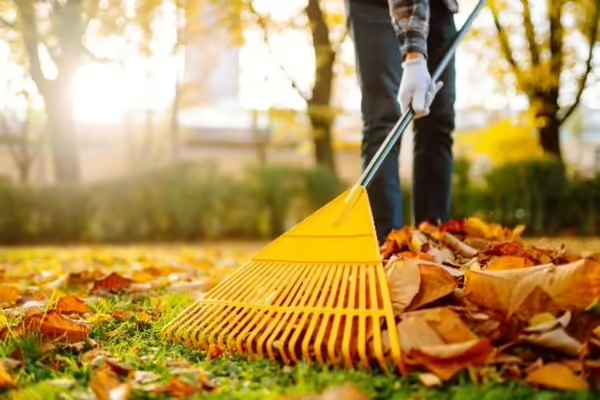
MATTESON, Ill. – After raking leaves this fall, consider recycling them on your property rather than bagging them for curbside pick-up.
For the typical home gardener, fallen leaves are one of the most readily available forms of organic matter. Organic matter aids plant growth and can reduce the need for fertilizer. It increases microbial activity and the number of beneficial bacteria, fungi, and other microorganisms in the soil. Organic matter also binds sandy soils, allowing for better water retention, and coats finer clay particles in the soil, providing more air space. Recycled leaves contribute to soil health, reduce landfill waste, and can be used in many ways.
Vegetable and annual garden bed help: Having matted leaves in a vegetable or annual garden bed in the fall will help smother winter weeds. Next spring, the leaves can be incorporated or tilled into the soil.
Pollinator and insect support: Incorporating fallen leaves into your garden and landscape beds will increase organic matter and support overwintering insect species that need protected nesting sites to survive the cold temperatures. Many native bees are ground-nesting, and leaves will provide an additional layer of insulation. Additionally, the eggs and larvae of moths and butterflies can be found on the leaves and branches of their host plants. For example, wild black cherry trees host azure butterflies, pawpaw trees host zebra swallowtail butterflies, and oak trees support the banded hairstreak butterfly, among many others.
Compost: brown leaves can be added to the green material in your compost pile. Brown “dry” materials are typically high in carbon and help balance the nitrogen-rich green “wet” material. Remove diseased leaves from the healthy ones you plan to recycle or compost. The rate at which leaves decompose depends on factors such as leaf size, tree species, and moisture level. Brown leaves break down more quickly when shredded and kept moist.
An easy way to recycle leaves: Store them in garbage bags with small holes throughout the bag’s surface, allowing them to break down naturally. Wetting the leaves and having the holes in direct contact with the earth (where more microbes are present) will speed up the decomposition process. After about 6-12 months, the result is leaf mold (partially decomposed leaves). Leaf mold can then be used as mulch or saved as a carbon source to add to your compost pile in the summer, when there are fewer readily available “brown” materials.
Recycling leaves on your property is an environmentally conscious choice that improves your garden soil, supports native insects, and reduces yard waste. Ideal garden soils should have around 5% organic matter. A standard soil test will tell you the percentage of organic matter in your soil. Contact your local University of Illinois Extension office for a list of soil testing labs.
For more information about pollinators and overwintering insects, visit Illinois Extension’s new pollinator website. Visit our website to learn more about the basics of composting, composting in Cook County, or about Extension’s Compost Ambassador program.
SOURCE: Nancy Kreith, Horticulture Educator, Illinois Extension
University of Illinois Extension develops educational programs, extends knowledge, and builds partnerships to support people, communities, and their environments as part of the state's land-grant institution. Extension serves as the leading public outreach effort for University of Illinois Urbana-Champaign and the College of Agricultural, Consumer and Environmental Sciences in all 102 Illinois counties through a network of 27 multi-county units and over 700 staff statewide. Extension’s mission is responsive to eight strategic priorities — community, economy, environment, food and agriculture, health, partnerships, technology and discovery, and workforce excellence — that are served through six program areas — 4-H youth development, agriculture and agribusiness, community and economic development, family and consumer science, integrated health disparities, and natural resources, environment, and energy.